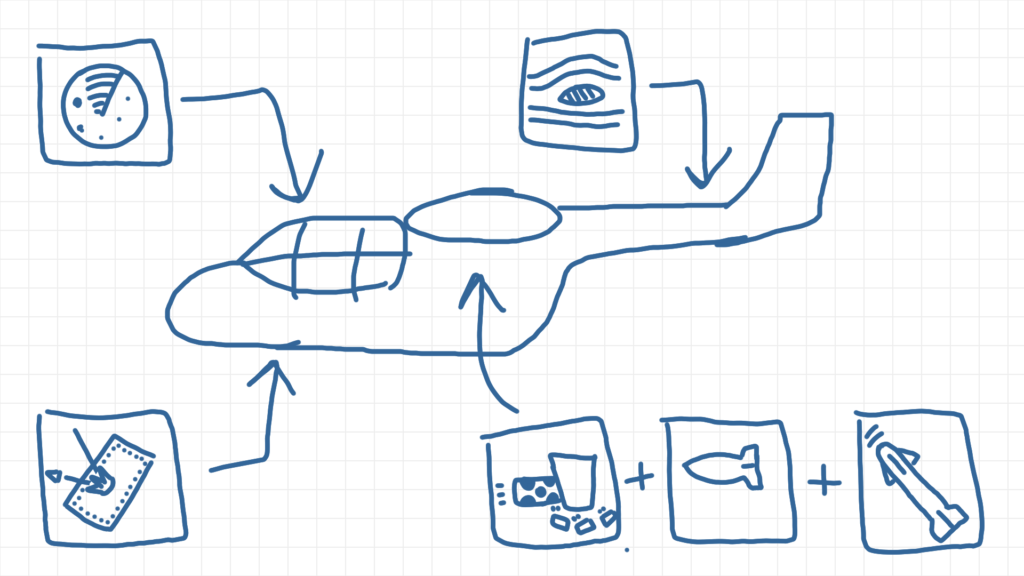A game stub where the player flies a lightly-armed aircraft through hostile territory while marking targets for various airstrikes.
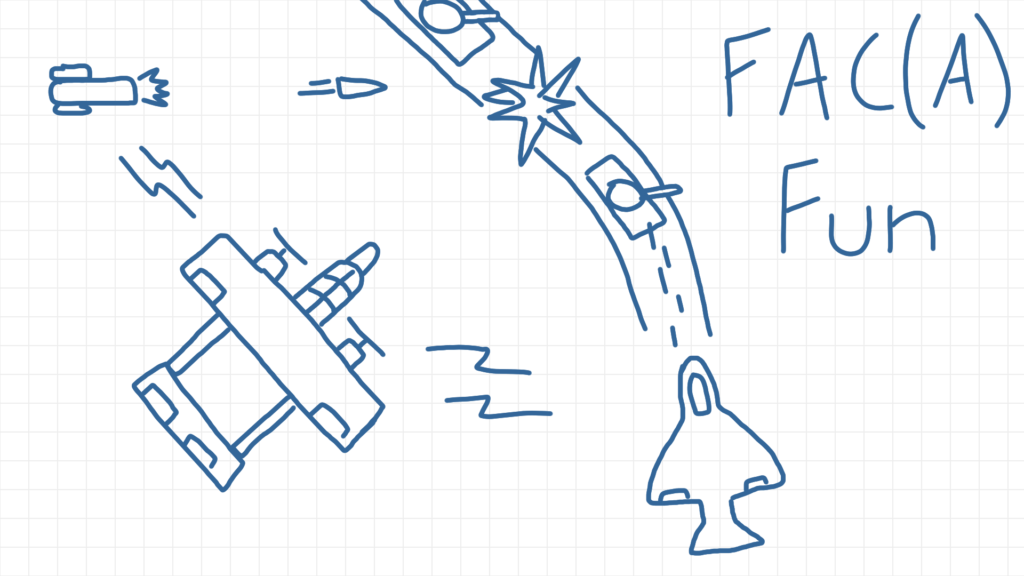
Close air support is a critical component of modern combat. When infantry and armor encounter enemy positions that are too well-defended to be easily taken out in a head-on attack, calling in an airstrike can be an extremely effective solution. However, airstrikes are difficult to coordinate from the ground, and so the Forward Air Controller (Airborner), or FAC(A) role was developed.
The OV-10 Bronco was frequently used in Vietnam as a FAC aircraft. It could carry various air-to-ground ordnance as well as different ways of marking targets. Despite the different types of weapons available, the radio was really the key to a FAC(A)’s success, as that was the only way to initiate the devastating airstrikes and artillery barrages that would actually provide the required mayhem.
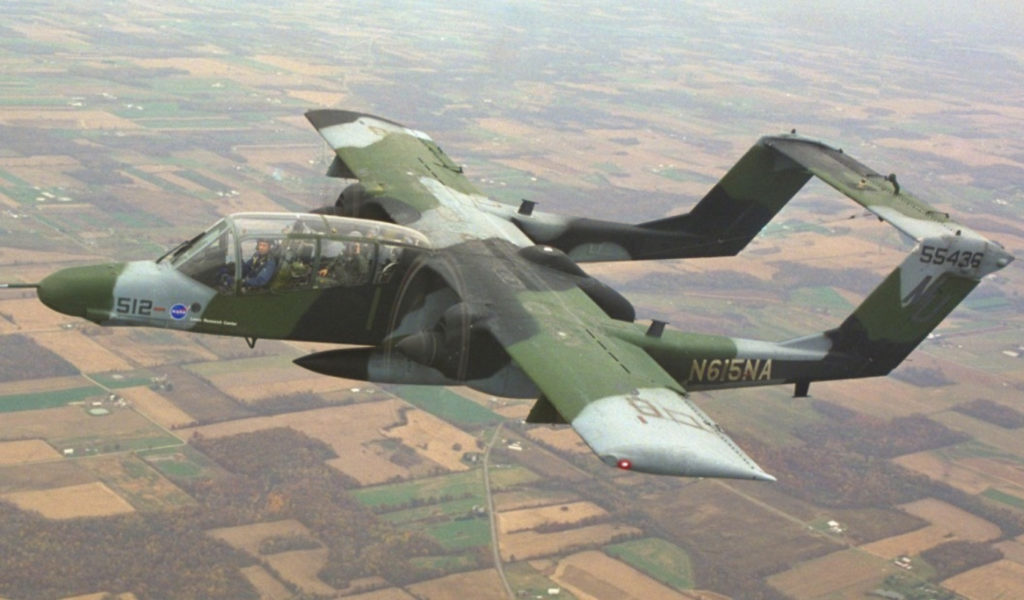
While it might be possible to implement an engaging tabletop game focused on the OV-10 and FAC(A) tactics, this might be an idea better suited for a digital environment. We will consider the rest of this post assuming a phone or computer-based game.
The core game loop would be flying an OV-10 (or similar lightly-armed and relatively fragile) aircraft over a battlefield, calling in targets for airstrikes while the friendly forces gradually advance on the enemies. To keep it relatively light, don’t let the game sink into becoming a heavyweight flight simulator. There are some really nice ones out there that might be hard to compete with, and the real thrill isn’t supposed to be the flying, in this case.
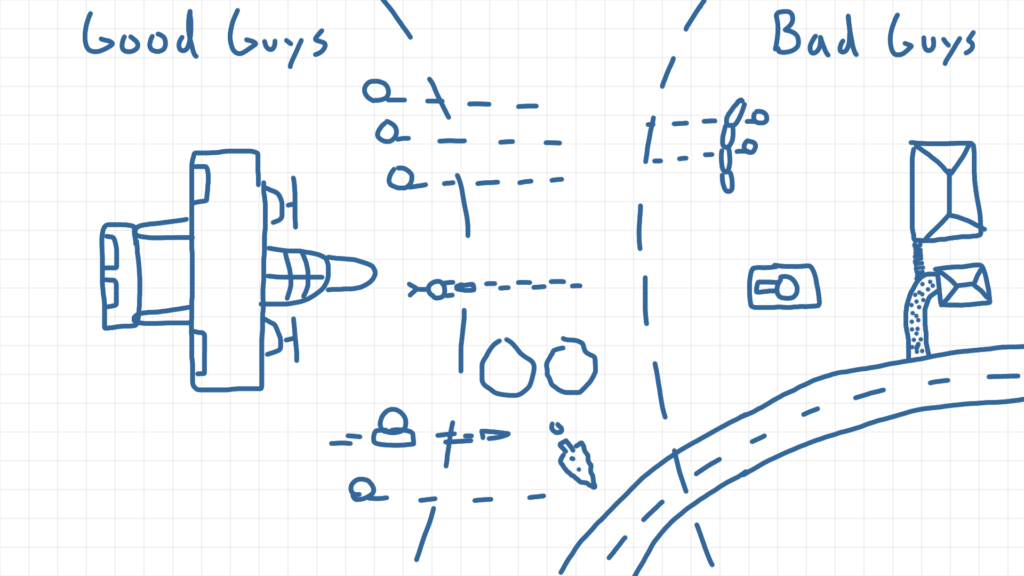
Also, this game shouldn’t be just an update version of Galaga or 1942, where the player just blasts away at the baddies coming from the top of the screen. It might be fine to have the player limited to a generally up-and-down playing area, but FAC(A)s are not in the business of engaging the enemy themselves. Certainly, it is possible to give the player some limited attack capabilities, but the real hook is making the player coordinate other aircraft attacks while still keeping their own aircraft from being shot down.
One way to implement the complicated close-air support mission is by using a context menu. In this, a player would select a potential target, perhaps by pressing on it (for a phone or tablet), or right-clicking (on a computer with a mouse). A context menu would pop up, giving the player a chance to select between different types of attacks, such as high-explosive shells or smokescreens from artillery, or napalm attacks, strafing runs, or laser-guided bombs form aircraft. Artillery strikes would generally occur from the friendly location towards the target, while the aircraft would require the player to specify a run-in heading.
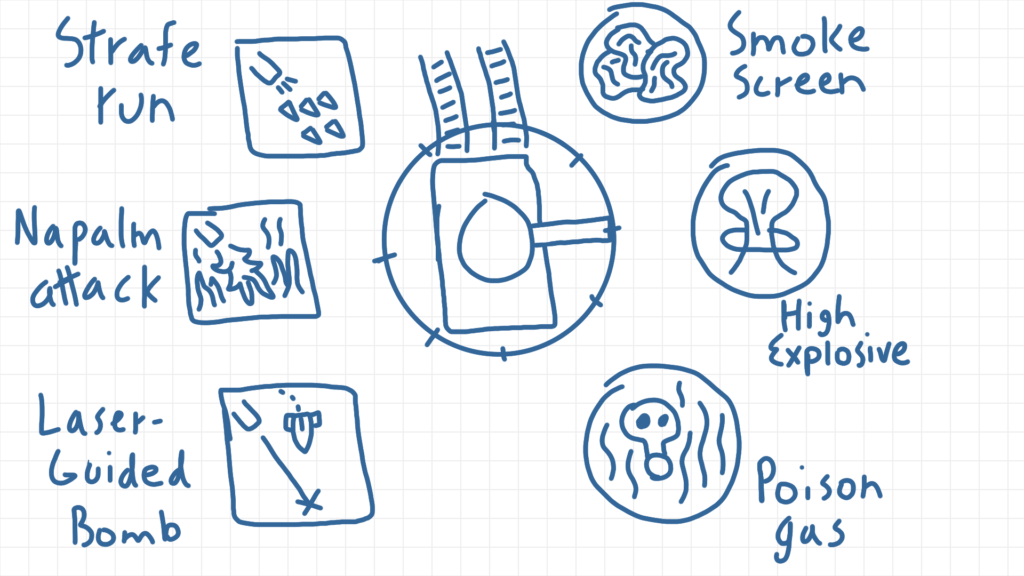
The challenge would generally be to match the right type of artillery or aircraft strike to the desired target. For example, a concrete machine-gun nest might need some high-explosive shells, while a moving tank convoy would best be attacked by a laser-guided bomb on the lead tank, followed by a strafe run down the axis of a road. The attacks take time to regenerate, meaning that players may not be able to use multiple powerful attacks in a row, thereby increasing the sense of pressure on the player. It could also lead to various emergent tactics – if the player is temporarily out of smokescreens to protect a friendly unit, perhaps a timely napalm strike on an oil refinery could provided the required obscuration.
Additionally, the accuracy of the impending airstrike could be tied to the OV-10’s proximity to the target. Thematically, the closer the pilot was, the better he could describe the target to the attacking aircrew or artillery unit. For the game mechanics, this pressures the player to fly closer to the threat in order to have a better chance of a successful attack. It also prevents the player from just spraying attack everywhere over the screen since the distant attacks likely wouldn’t hit the target while still wasting valuable ordnance.
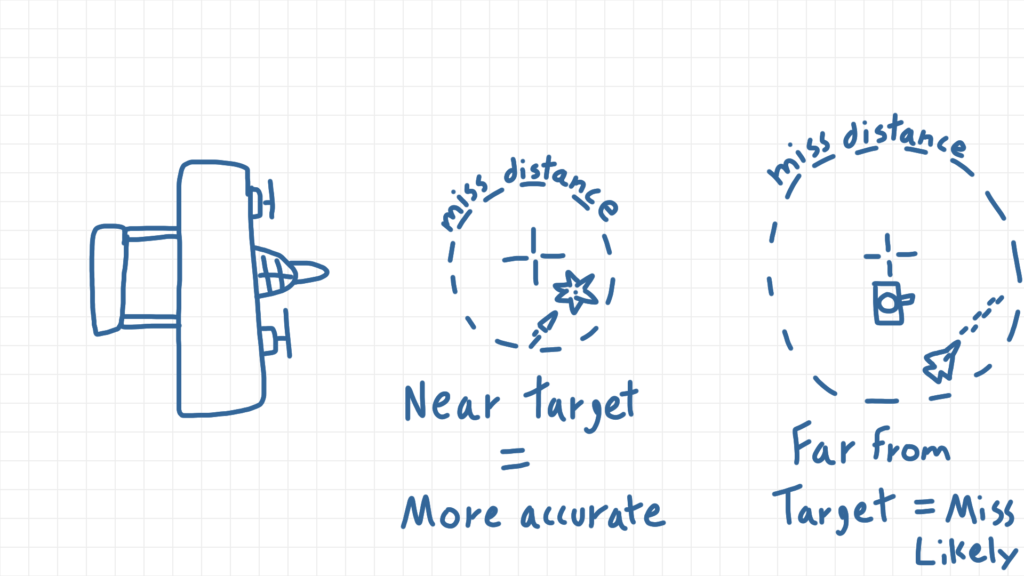
The player should feel a steadily increasing sense of frantic pressure as the friendly forces engage newly-observed enemy positions and attack options diminish. The OV-10’s weak attack options should be hard-pressed to fill in the gaps while the artillery and airstrike options regenerate. The enemy surface-to-air weapons should gradually become more common and more dogged in their pursuit of the enemy.
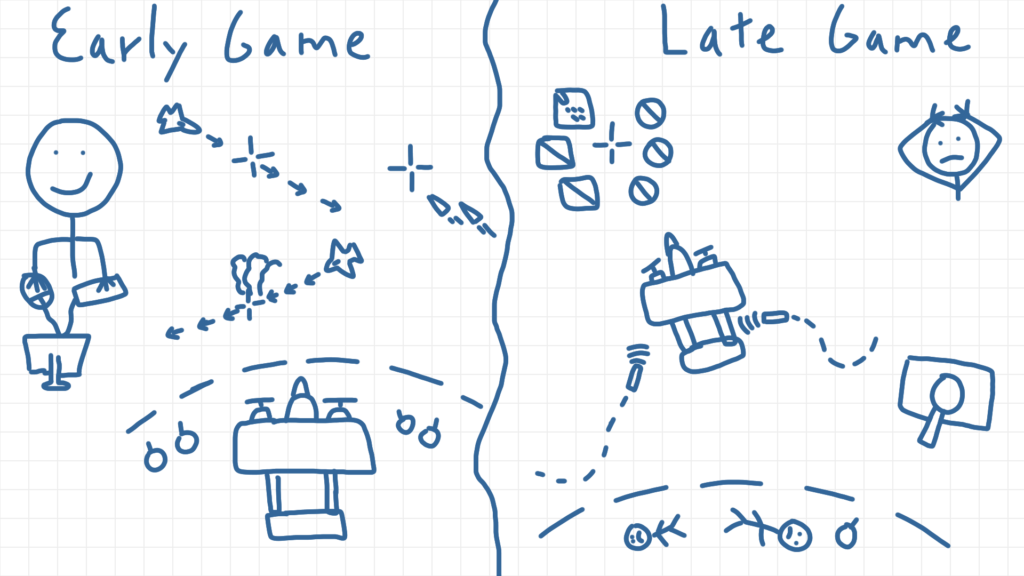
The player could face an endless supply of enemies, with the game only ending once the last friendly ground unit is overrun or the OV-10 itself is destroyed. Or the game could be episodic, with the player returning to based after completing certain tasks. For an episodic game, the player could have the option of reading a mission briefing and then outfitting his aircraft with different ordnance and equipment to be best suited for the challenge at hand.
